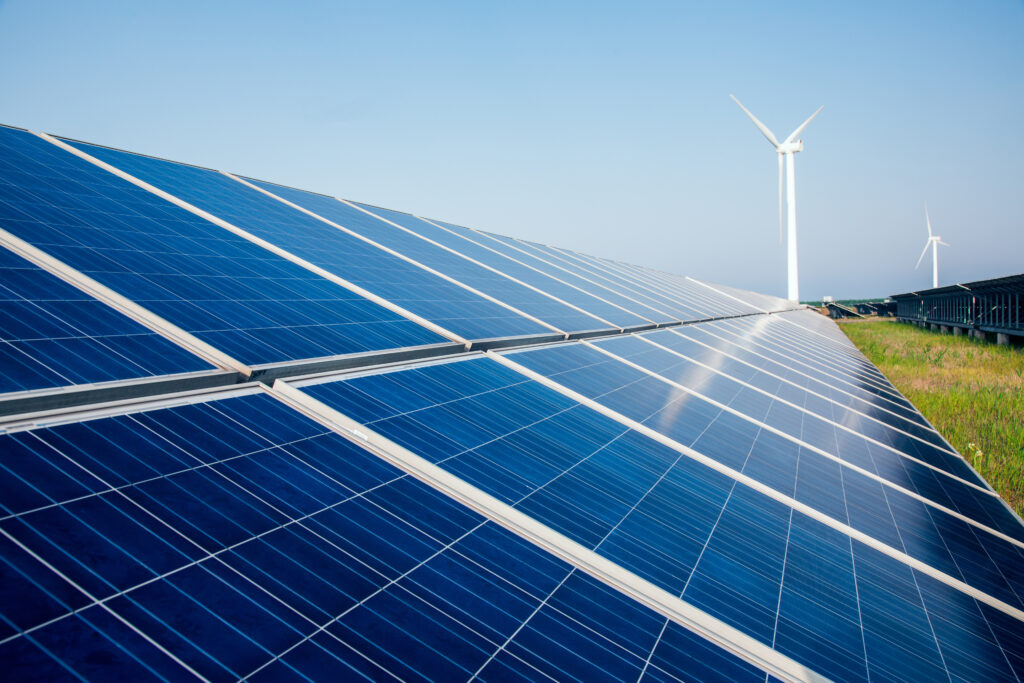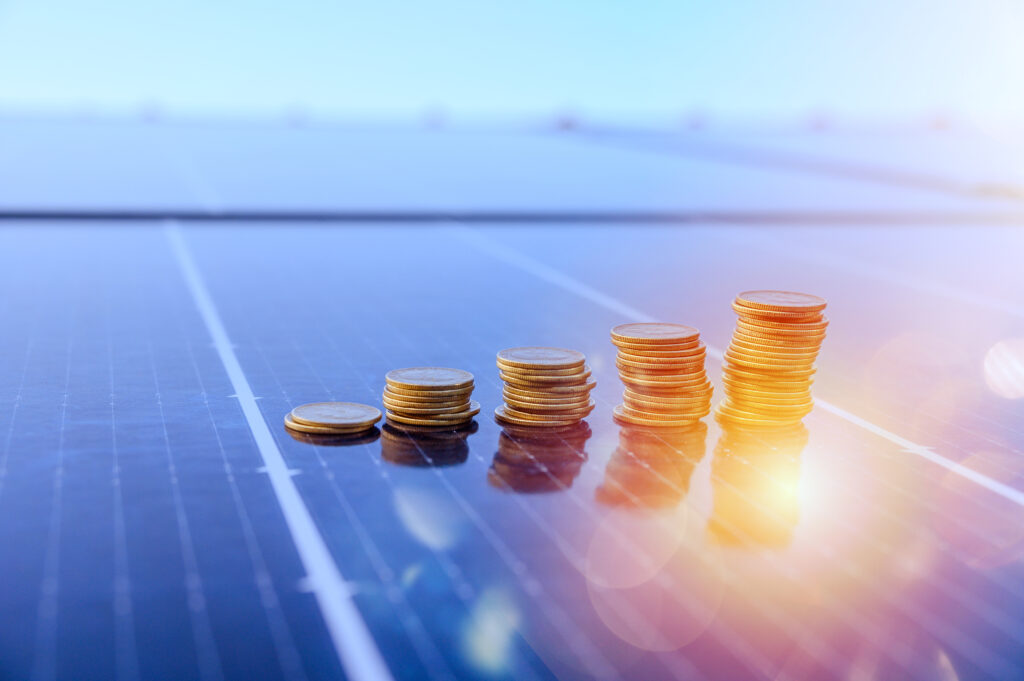How Does Solar Work?
In the age of climate change and increasing energy prices, many people are looking to switch to renewable energy sources to lower their carbon footprint and reduce their monthly energy bills. The power of the Sun is essential for our existence and in modern times we’ve made giant leaps in harnessing its energy to improve our lives. Today, we make use of it to power cars and generate electricity for homes and businesses.
While solar energy is availably freely the equipment required to capture it use it comes at a cost. Historically, solar panels were expensive, and the associated equipment to install them on a home or business and utlise the power was no different. However, with mass production and technological advances over the years, this is no longer the case with costs having dropped considerably.
Solar energy systems are an excellent way to tap into the free, clean energy source of the Sun. The long-term cost-cutting benefits & tax incentives make these systems cost effective investment for both homes and businesses.
This article breaks down the basics of solar systems. Keep reading to know more.

What Are The Components Of A Typical Solar System?
Solar panels are the first product that comes to mind when thinking about a solar system. However, they are made up of many different components, which includes
What is a Solar Panel?
Solar Panels:
A solar panel is only one piece of the larger picture when it comes to solar energy; however, it is the essential one that’s why it has become synonymous with Solar Systems. Solar panels generate electricity; they don’t store or distribute it. Instead, the panels capture the energy from the Sun and convert it to usable electricity. In addition to the panels themselves, a racking system is needed on the roof to hold them in place.
Utility and Solar Meters:
The utility meter keeps track of the amount of electricity you use in one billing cycle, and the solar meter records how much electricity your solar system produces. Usually, you have to replace the conventional electricity meter or append a meter to calculate solar energy produced and used.
Solar panels absorb sunlight to produce electricity like an LED light bulb uses electricity to create light. When light shines down on a solar panel, it converts the energy into an electric current using semiconductor materials and is the main solar technology that makes a system work..
Solar panels are made of special cells called solar cells (also called solar photovoltaic cells). A single photovoltaic PV cell can generate only a small amount of electricity, but multiple cells connected together can generate substantial amounts of power. PV cells are designed with positive and negative layers of semiconductor material. When joined together, the layers create an electric field capable of converting sunlight into usable energy. PV cells are typically made of silicon or similar materials.
Solar cells are manufactured by layering various materials on top of each other. For example, some applications require a single layer of light-absorbing material. In contrast, others benefit from connecting multiple layers to form a multi-junction solar cell for better performance.
Solar cells can be made from several different materials. Silicon is one of the most common, but there are other options that could even outshine it. For example, perovskite solar cells are still finding their footing in the world of solar engineering, but they’re already making big waves in terms of efficiency and price. At present, however, silicon remains the industry standard.
Inverter:
One of the most critical components in a solar system is the inverter. In addition to the panels, a grid-tied installation needs a DC/AC power inverter to turn the direct current from the panels into an alternating current that your household appliances can use. Several types of inverters are available in the market, ranging from the cheapest and most used string inverters to the more advanced micro-inverters. A hybrid inverter of these two which includes a DC optimizer, is another viable option.
Solar Batteries:
Batteries are a vital ingredient in most solar systems. If you want to be truly energy independent, the best solution is to combine solar panels with a backup battery. A battery backup system gives you the added security of extra power for essential appliances during nighttime, cloudy days, and outages. The type of battery you use depends on several factors, including your system’s power needs and how much space is available for storage.
How Does A Solar Panel Work?
Solar panels are the most crucial part of a solar-powered system as they harness the Sun’s rays to generate power. These devices capture the light from the Sun and transform it into electricity. The power is then guided towards a solar inverter, which converts DC electricity into AC for household devices.
Solar panels are composed of many solar cells that work together to produce electricity. When sunlight hits a solar cell, photons push the electrons present in an atom of the solar cell. These electrons rush through the circuit, and with this flow of electrons, the result is electricity generation.
This photovoltaic effect is a process that occurs in every solar cell present in a solar panel. As a result of this phenomenon, each solar panel generates a considerable amount of energy — the more the number of cells present in a panel, the higher the power it can yield. Therefore, one can have only one solar panel or multiple ones connected to form a solar array.

What Are The Types Of Solar Panels?
Typically, a panel will have either 60 or 72 cells. A 60-cell panel has ten rows of six cells and are usually about 1.7m long, while a 72-cell panel has 12 rows of six and usually about 2m long. Generally the more cells on a panel, the higher the wattage, although some panels are more efficient than others. In general, the extra length of the 72-cell panel allows it to produce more energy.
For residential solar installations, 60-cell solar panels are typical — their smaller size allows for easy installation and maximising of available space However, if space and logistics considerations permit, the larger 72-cell panels can be used although are typically the choice for businesses and solar farms.
Utility and Solar Meters:
The utility meter keeps track of the amount of electricity you use in one billing cycle, and the solar meter records how much electricity your solar system produces. Usually, you have to replace the conventional electricity meter or append a meter to calculate solar energy produced and used.
Solar panels absorb sunlight to produce electricity like an LED light bulb uses electricity to create light. When light shines down on a solar panel, it converts the energy into an electric current using semiconductor materials and is the main solar technology that makes a system work..
Solar panels are made of special cells called solar cells (also called solar photovoltaic cells). A single photovoltaic PV cell can generate only a small amount of electricity, but multiple cells connected together can generate substantial amounts of power. PV cells are designed with positive and negative layers of semiconductor material. When joined together, the layers create an electric field capable of converting sunlight into usable energy. PV cells are typically made of silicon or similar materials.
Solar cells are manufactured by layering various materials on top of each other. For example, some applications require a single layer of light-absorbing material. In contrast, others benefit from connecting multiple layers to form a multi-junction solar cell for better performance.
Solar cells can be made from several different materials. Silicon is one of the most common, but there are other options that could even outshine it. For example, perovskite solar cells are still finding their footing in the world of solar engineering, but they’re already making big waves in terms of efficiency and price. At present, however, silicon remains the industry standard.
Can Solar Systems Completely Replace Your Traditional Electricity Systems?
Solar power is a clean alternative energy source that can be used to generate electricity for homes and businesses. As an excellent alternative to traditional fuel sources, they are not without limitation: they produce electricity only when the sunlight is out, and also have fluctuating output when it is. Therefore You can’t go off-grid with them alone. You’ll need a way to store the solar energy they provide during the day for use at night, and this is why people go for solar battery storage.
You can also continue with net metering to receive a feed in tariff for the surplus power produced by your solar power system that is exported back to the grid. If you make more energy than you need in a given month, you can transfer it back to the grid for credit. Then, in times of high power usage or when your panels are covered in the shade, you can use these credits instead of paying high rates to the utility company.
Conclusion
Solar panels are not only the best value energy source out there; they’re also more environmentally friendly than other sources of power. While solar power systems are still a significant investment up-front, the costs are recouped, and the prices have also decreased a lot in the past few years.
Although solar panels are an investment in your future, they are also a good investment for the environment. Unlike other forms of energy production, solar panel use is ultimately carbon-neutral, meaning it doesn’t contribute to carbon emissions.
